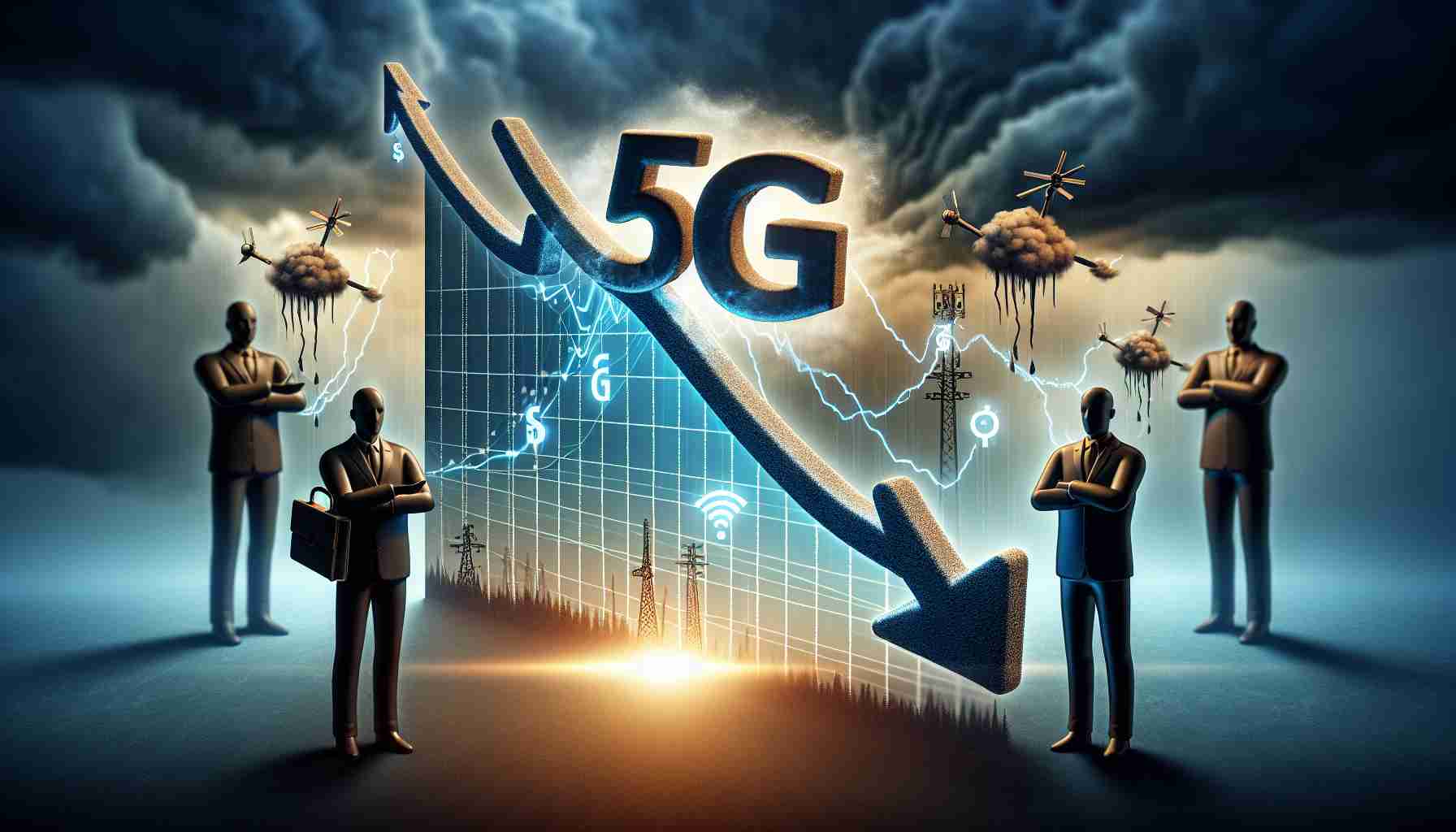Telecom Equipment Titans Face Market Headwinds
In recent developments within the telecom sector, top-tier Nordic equipment suppliers Ericsson and Nokia are confronting severe market turbulence. Previous anticipated restocking by US telecom operators—major profit contributors for both companies—failed to materialize, leading to a significant downturn in 5G spending.
Drawing from senior executives’ statements, recovery expectations have been dampened. Both Börje Ekholm of Ericsson and Pekka Lundmark of Nokia initially projected a return to growth by the year 2024 following a market recalibration. However, current market observations suggest a more grim reality, with analysts predicting even sharper declines than initially feared.
Analysts Ring the Alarm Bells
A report from Omdia encapsulates the dire state of the radio access network (RAN) product segment, revealing that sales suffered a substantial drop of over 20% year-over-year in the first quarter. Ericsson’s Ekholm, revising previous forecasts, suggested a more bearish outlook in Ericsson’s recent quarterly report.
Concurrently, revised projections from Omdia indicate an ominous 7% to 9% sales decrease. Meanwhile, research from Dell’Oro Group paints an even grimmer picture, designating the RAN sector as a “disaster” with potential first-quarter spending declines ranging from an unprecedented 15% to 30%.
Muted Optimism for Future Sales
Despite the current downturn, analysts remain cautiously optimistic about improvements later in 2023, though largely due to more favorable year-on-year comparisons post the sharp declines of 2023. However, concerns linger over whether a significant recovery beyond 2024 is feasible given multiple adverse factors. These include tepid 5G-related revenue growth for telecom companies, efficient network handling of traffic, and a potential slowdown in traffic growth rates.
Competitive Pressures and Innovation Challenges
Market challenges are underpinned by fierce competition among telcos, pushing prices down and pressuring profits. On the innovation front, the industry’s reliance on application programming interfaces (APIs) to unlock 5G potential may not pan out as lucratively as hoped, with some telco executives skeptical about developers’ willingness to invest heavily in these services.
As Ericsson, Nokia, and other industry players brace for the bumpy road ahead, the overarching question remains whether emerging technologies and market shifts will eventually compel telecom operators to ramp up 5G investments—or if the slump signals a more fundamental shift in the telecommunications landscape.
Additional Relevant Facts:
– 5G adoption rates vary globally, with regions like Asia, particularly China and South Korea, adopting the technology at a faster pace than others. Factors such as government backing and local competitive dynamics influence these rates.
– The COVID-19 pandemic both challenged and accelerated digital transformation across industries, which could affect future 5G deployment strategies and spending.
– Security concerns around 5G networks, particularly the exclusion of Chinese vendors like Huawei from several Western markets, impact market forecasts and may benefit Ericsson and Nokia as alternative suppliers.
– Open Radio Access Network (Open RAN) is an emerging technology trend that could democratize the RAN architecture, promoting competition and potentially affecting Ericsson and Nokia’s market shares.
Key Challenges and Controversies:
– Investment Uncertainty: Despite initial excitement, the return on investment for 5G has been slower than anticipated, making operators cautious about further spending.
– Geopolitical Tensions: Huawei’s exclusion from key markets raises tensions and affects global 5G rollout strategies. This situation can be both an opportunity and a challenge for Ericsson and Nokia given the shifting political alliances and trade agreements.
– Technological Evolution: Rapid advancement in technologies, including the potential for 6G on the horizon, may impact the long-term decisions of telecom operators regarding 5G expansion and investment.
Advantages:
– 5G technology promises higher data speeds, lower latency, and increased capacity, which are essential for enabling advanced applications such as autonomous driving, smart cities, and the Internet of Things (IoT).
– Ericsson and Nokia, as established Western vendors, could capture more market share in the wake of restrictions on Chinese vendors in certain regions.
Disadvantages:
– High infrastructure costs associated with 5G deployment can be a significant barrier for telecom operators, resulting in a slower-than-expected rollout.
– Operators could face challenges in justifying the 5G infrastructure costs to consumers and businesses, as the immediate benefits might not be evident or compelling enough to drive fast adoption.
Suggested Related Links:
– For readers looking for more information on Ericsson, the official website is available at Ericsson.
– Additional details on Nokia’s vision and solutions can be found at Nokia.
– Research and market analysis related to 5G technology are often published by Omdia, accessible via Omdia.
– For an insight into market trends and competitive analysis, Dell’Oro Group provides reports that can be found at Dell’Oro Group.
Note: URLs are provided assuming their validity as of the current date, and any changes by the respective ownership will not be reflected herein.
